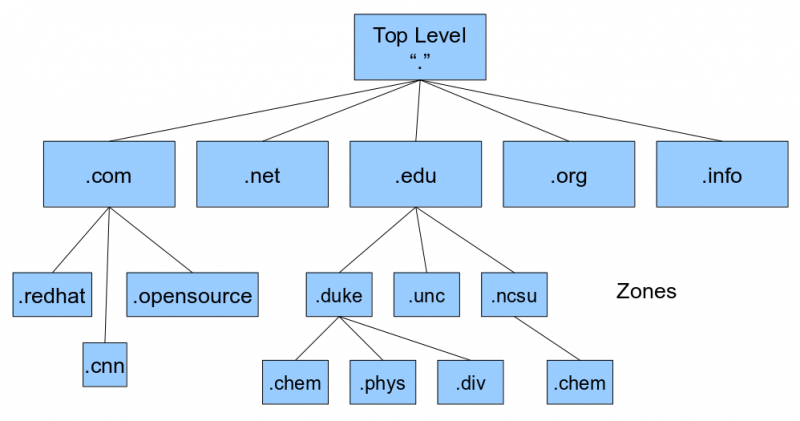The Domain Name System (DNS) serves as an essential framework for internet navigation, translating user-friendly domain names into the numerical IP addresses that computers understand. Its historical evolution from a simple hosts.txt file to a sophisticated hierarchical structure highlights its significance in modern digital communication. However, despite its vital role, DNS is not without its vulnerabilities, including security threats and potential misconfigurations. As we investigate the intricacies of DNS, it becomes clear that comprehending its components and challenges is fundamental for grasping the future of online connectivity. What lies ahead for this foundational technology?
Overview of DNS Functionality
The Domain Name System (DNS) serves an essential role in the functionality of the internet by translating human-readable domain names into machine-readable IP addresses, thereby facilitating seamless communication between users and web resources.
The efficiency of this process relies on sophisticated DNS algorithms that optimize query resolutions and improve overall performance. Caching strategies further augment DNS functionality by storing previous queries, which reduces latency and minimizes redundant lookups.
When a user inputs a domain name, the system first checks local caches before querying external DNS servers. This hierarchical structure not only streamlines access to web resources but also contributes to a more responsive internet experience, enabling users to navigate freely without the burden of memorizing numerical IP addresses.
Historical Development of DNS
Recognizing the significance of efficient domain name resolution led to the development of the Domain Name System (DNS) in the early 1980s.
This evolution emerged from the limitations of the hosts.txt file method used in ARPANET, which struggled with scalability as networks expanded. Paul Mockapetris introduced DNS in 1983 to decentralize the mapping process, enabling dynamic updates and hierarchical management of domain names.
The ARPANET shift to DNS marked a crucial change in internet infrastructure, allowing for greater flexibility and reliability in domain resolution.
As DNS matured, its governance moved to organizations such as ICANN, reflecting the need for a coordinated global approach.
This historical context highlights the foundational importance of DNS in today's interconnected digital environment.
Key Components of DNS
At the core of the Domain Name System (DNS) are several key components that work in unison to guarantee efficient domain resolution.
The DNS architecture comprises a resolver hierarchy that includes DNS resolvers, root name servers, top-level domain (TLD) servers, and authoritative name servers, each fulfilling distinct server roles.
Caching strategies, such as browser, operating system, and resolver caches, improve performance by minimizing redundant queries.
Additionally, security mechanisms, particularly DNS Security Extensions (DNSSEC), safeguard the integrity of the resolution process against spoofing and other attacks.
Domain delegation allows for organized management of domain names, enabling distinct entities to control specific subdomains, thereby promoting scalability and efficiency in the vast realm of the internet.
Types of DNS Records
Building upon the foundational components of the Domain Name System (DNS), a critical aspect of its functionality lies in the various types of DNS records utilized for domain resolution and resource identification.
The A Record maps domain names to IPv4 addresses, facilitating access to web resources. In contrast, the AAAA Record serves a similar purpose for IPv6 addresses, accommodating modern internet growth.
The CNAME Record allows for aliasing, linking alternative domain names to a canonical name, which streamlines management of multiple domain entries.
Additionally, the MX Record specifies mail servers responsible for handling email communications for a domain, thereby ensuring that messages are correctly routed.
Each record type plays an essential role in the seamless operation of the DNS infrastructure.
User Experience With DNS
The user experience with the Domain Name System (DNS) is fundamentally shaped by its ability to provide rapid and efficient domain resolution, which is largely unnoticed by the average internet user.
This seamless interaction supports domain name navigation, allowing users to access websites without the burden of memorizing numerical IP addresses. A well-functioning DNS improves the DNS user experience by minimizing latency and ensuring quick access to resources.
The hierarchical structure of DNS, combined with caching mechanisms, contributes to this efficiency, ensuring that domain resolution occurs in milliseconds.
This precision not only raises user satisfaction but also enables users to navigate the vast internet environment freely, cultivating an atmosphere where information is readily accessible and easy to discover.
Common DNS Challenges
DNS, a crucial backbone of internet functionality, faces several challenges that can disrupt its effectiveness and reliability.
Key issues include DNS spoofing, which compromises DNS security by redirecting users to malicious sites, and DNS downtime, resulting in inaccessible services.
DNS propagation delays can hinder timely updates, affecting scalability and user experience. Additionally, DNS misconfiguration can lead to erroneous domain resolutions, exacerbating downtime.
Effective DNS monitoring and proactive management are essential to mitigate these risks.
While DNS caching improves response times, it can also perpetuate outdated information if not properly managed.
Addressing these challenges is essential for maintaining robust DNS infrastructure and ensuring seamless web navigation for users seeking freedom online.
Future Trends in DNS
Several emerging trends are poised to reshape the environment of domain name system (DNS) management and functionality.
One noteworthy trend is the shift towards decentralized management, leveraging blockchain technology to improve security and reduce reliance on central authorities. This approach not only increases resilience against attacks but also equips users with greater control over their domain names.
Additionally, AI integration is transforming DNS operations by enabling advanced traffic prediction and automated threat detection, thereby boosting efficiency and security.
These developments are critical as the internet evolves, necessitating more robust, scalable solutions that cater to an increasingly complex digital environment.
Embracing these trends will be essential for organizations seeking to maintain autonomy and guarantee reliable access to online resources.
Frequently Asked Questions
How Does DNS Impact Website Loading Speed?
DNS greatly impacts website loading speed through efficient DNS caching benefits, minimizing propagation delays, optimizing query resolution, and ensuring DNS server reliability. These factors collectively improve user experience by reducing latency in accessing web resources.
Can I Use My Own DNS Server?
Many organizations, like Google, utilize custom DNS servers to improve performance and privacy. By managing DNS configuration independently, they guarantee better control over data, mitigate security risks, and optimize server management for enhanced user experiences.
What Are DNS Resolvers and How Do They Work?
DNS resolvers execute recursive queries to translate domain names into IP addresses. They utilize DNS caching for efficiency and interact with forwarding servers within the DNS hierarchy, streamlining the resolution process and enhancing user experience.
How Do Domain Name Registrars Interact With DNS?
Domain registrars diligently deliver domain registration and registrar services, linking user requests to DNS. They guarantee accurate record updates, facilitating seamless navigation and enabling users to establish and manage their online identities effectively and efficiently.
What Role Does DNS Play in Cybersecurity?
DNS plays an essential role in cybersecurity by enforcing DNS security measures, mitigating DNS spoofing, employing DNS encryption, implementing DNS filtering, ensuring DNS integrity, and conducting DNS monitoring to address vulnerabilities and thwart DNS attacks effectively.








